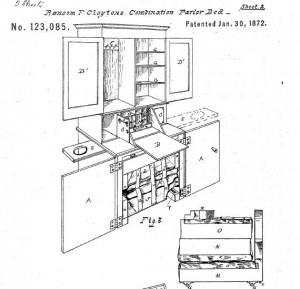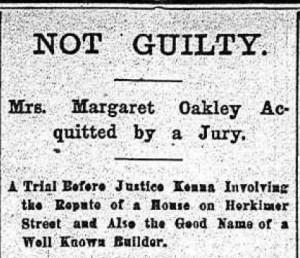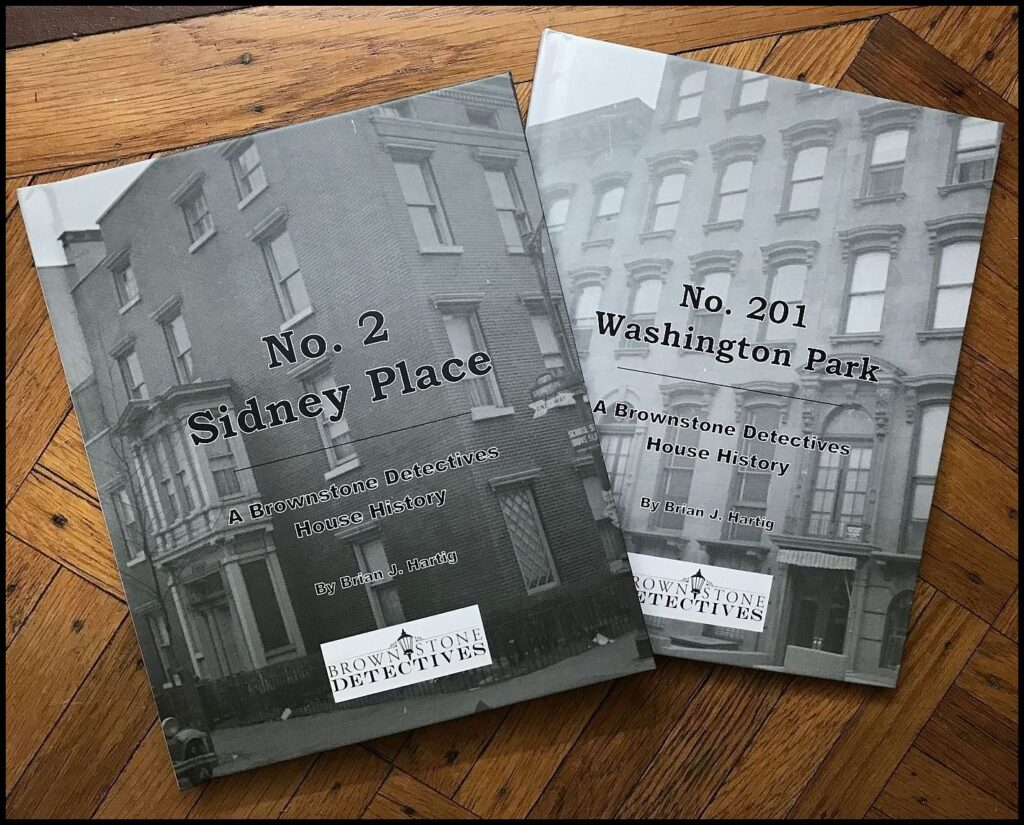A BED-STUY BUILDER “GOES ASTRAY” (1891)

Brownstone Detectives investigates the history of our clients’ homes.
The story you are about to read was composed from research conducted in the course of one of those investigations.
Do you know the history of YOUR house?
********************************************************************************************************************************
One of the more colorful builders in the Bedford-Stuyvesant area before the turn of the century was Ransom F. Clayton. Clayton and his wife Hannah purchased entire blocks for development and became rich reselling land and building brownstones for occupancy.
Clayton, approximately 60 years of age in the early 1890s, was the founder of the building firm Ransom F. Clayton & Son. In addition to being a builder, he had also been a jack-of-all-trades – a Civil War veteran, an inventor, a nominee for City Controller with the Prohibition Party, and a director and the treasurer of the Ocean Palace Elevated Railroad.
In 1891, though, he could add to that list the title of “scoundrel.”

For, in that year, having some years previous turned over the reins of his building firm to his son, Clayton was now being given the opportunity to lose the property in a highly publicized divorce scandal.
Several newspapers of the time hyperventilated over the steamy details of the case, from the “plain black gown” that Mrs. Clayton wore to court, to the description of “the other woman,” Mrs. Margaret F. Oakley, who was “tall,” “finely formed,” and “richly attired,” and further to, finally, how the crowd in the packed court room erupted in applause when the defendant’s verdict was read aloud.
It was elder versus youth. Established versus ingénue. Distinguished versus pedestrian. And the public loved every last juicy piece of gossip that was wrenched from the court room drama and tossed to them in the dailies.
In an initial trial, Mrs. Margaret F. Oakley had been arrested, charged, and tried for “keeping a disorderly house.” Fortunately for Mrs. Oakley, before the courtroom drama played out, Ransom had paid her bail, and after a harrowing court trial, she was subsequently found not guilty.
Unfortunately for Ransom, though, Mrs. Clayton discovered, probably via the papers, that her husband had become Mrs. Oakley’s “surety.”
In the subsequent trial, held a few weeks after Mrs. Oakley had been freed, Mrs. Clayton, after “thirty-five years of married life,” was seeking a divorce decree in court based upon the evidence already presented. Although Ransom did not challenge the request, the divorce trial went forward. It was covered in the local papers just as keenly as the first trial had been, complete with witnesses providing the same colorful evidence they had initially provided against Mrs. Oakley, with whom Ransom, it was alleged, had been “visiting” overnight.
On the plaintiff’s side, George F. Wolfram, 22, of 1182 Herkimer Street, was described as having proven a “voluble witness.” Wolfram, a street car conductor who resided “in the top flat of the three-story apartment house,” had seen Mrs. Clayton’s husband in some less-than-discriminating circumstances, and he gave great and exact detail of his observations.
Wolfram had come to the conclusion, before Ransom had appeared on the scene, that Mrs. Oakley, who incidentally, “occupied the first flat with a mulatto girl as a companion,” was “not what she ought to be,” and, as such, he desired her removal from the building. Toward that end, Wolfram became the house’s self-appointed guardian of morals, and began to keep an eye on the comings and goings of Mrs. Oakley’s callers – and, as the timing worked out, on a new “visitor” in particular – Ransom.
See part II of this court drama in tomorrow’s Brownstone Detectives post.
———————————————————————————————————————–
 Brownstone Detectives is an historic property research agency. Our mission is to document and save the histories of our clients’ homes. From our research, we produce our celebrated House History Books and House History Reports. Contact us today to begin discovering the history of your home.
Brownstone Detectives is an historic property research agency. Our mission is to document and save the histories of our clients’ homes. From our research, we produce our celebrated House History Books and House History Reports. Contact us today to begin discovering the history of your home.
[…] see Pt. I of Hijinks on Herkimer) It was not too long before, on one specific occasion, Wolfram took notice of Clayton approaching […]